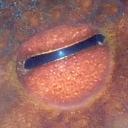Yahoo Answers is shutting down on May 4th, 2021 (Eastern Time) and beginning April 20th, 2021 (Eastern Time) the Yahoo Answers website will be in read-only mode. There will be no changes to other Yahoo properties or services, or your Yahoo account. You can find more information about the Yahoo Answers shutdown and how to download your data on this help page.
Trending News
How do I remove a coat of epoxy from a wooden table?
I was restoring a very soft-wood pine coffee table. Wasn't sure how to finish it after I applied the stain: I knew that I needed SOME kind of top coat to protect the wood from further dings and scratches, but don't like the look of a hard, shiny coat that just sits on the surface; I was trying to get a softer, mellower, more natural-appearing finish. Got some bad advice from someone who suggested that I apply an epoxy leveler to seal the surface, then finish it with a satin varnish. I'd never heard of doing anything like this but thought I'd learn something (this individual usually does know what he's doing.) Long story short: the table looks terrible: DEFINITELY not the look I was going for, and on top of that, the epoxy resin didn't adhere properly to the surface of the wood but actually sort of beaded up and dried that way. I've tried sanding the crud off as well as using the acetone-based strippers available at the hardware store, but can't get rid of it entirely: there's still a thin, white residue left. What else can I do? The table has sentimental value.
10 Answers
- Common SenseLv 75 months ago
I hope some of the advise works for your table...
And, if it does....here is how to refinish...
Stain as desired. For a beautiful finish that looks great, finish with Minwax Antique Oil. This oil is so darn easy to use, you will be amazed. No experience required...simple directions.
This product leaves a hand rubbed finish as if it has been there all along. An amazing product.
- RobsteriarkLv 76 months ago
Sanding won’t work: it just makes it worse as the soft wood will sand away leaving the high patches of hard epoxy standing proud.
You tried acetone and that failed: with epoxy acetone only really has a chance if the epoxy has not fully cured.
That leaves very few options.
What will work is to remove the table top, get it to an industrial joinery, and pay them to put the top through their router table. That will cut off the epoxy and the the wood below it to a set thickness until all of the table top is smooth and of the same thickness. The top could then be safely put through their thicknessing machine (basically a huge and very wide power planer) to restore a uniformly smooth finish. Nobody sensible would try the thicknessing machine first as the hard epoxy would ruin the blades on the machine.
The above is only worth trying if the table top will still retain enough thickness. The cost of the job shouldn’t be especially high but it may be the difference between repairing or replacing the table.
As a last ditch alternative you could try using a blowtorch and a scraper tool. You’ll need to protect the bare softwood from getting too badly charred and burnt though, and just making the wood wet won’t do that. So you could lay a thick wet layer of paper kitchen towelling over the bare wood areas, and keep making it wet. Soggy newpapers will work even better but you risk the ink penetrating deep into the wood unless you lay aluminium foil below it. Or apply a layer of anything else which is thick and very moist. Don’t try using aluminium foil alone as that will just burn though in no time.
If you try the blowtorch then wear safety glasses and protective gloves, and do it outdoors as the fumes are not good. Also make certain to have a bucket of water or a fire blanket handy in case the top catches fire.
Obviously that last method will need a lot of refinishing to the table top but it will get rid of the epoxy. It’s also likely to leave an undulating surface which isn’t flat. But it is also a low cost method. Wood prepared that way and then allowed to fully dry would be ideal to go through a thicknessing machine to leave a flat surface.
See photo below for the type of scraper: they’re widely available at tool and hardware shops.

- Anonymous6 months ago
You toss the table..because you FORKED IT.
"the epoxy resin didn't adhere properly to the surface of the wood but actually sort of beaded up and dried that way." In English, you messed around too long working the epoxy so it jelled up(reaction) and you were playing with a jello. Before the reaction started, you stop playing with it. Then it has a chance to flow out and harden.
This piece is ruined.
- How do you think about the answers? You can sign in to vote the answer.
- Anonymous6 months ago
Buy a really cheap orbital sander (Ebay) and some medium and fine abrasive sheets. Acetone may dissolve the epoxy but it's also likely to discolour the wood. Sanding is safe and you will get a good finish to apply your choice of coating to. Wear a mask as dust is bad for lungs.
- ?Lv 66 months ago
Buy a really cheap orbital sander (Ebay) and some medium and fine abrasive sheets. Acetone may dissolve the epoxy but it's also likely to discolour the wood. Sanding is safe and you will get a good finish to apply your choice of coating to. Wear a mask as dust is bad for lungs.
Source(s): Ancient DIYer - JohnLv 66 months ago
Acetone is the universal glue remover (cuts glue). Paint it with acetone, let it sit, then wipe the epoxy off. Acetone is the major component of fingernail polish remover and has hospital uses. Acetone is sold in paint stores. Acetone has a low flash point so be careful. Pure water is the universal solvent.
- Spiny NormanLv 76 months ago
I would carry on with the sanding or use very fine wire wool dampened with
soapy water.Acrylic varnish is water based and awful stuff to remove when hard, keeping itmoist will weaken it and make it easier to remove.






